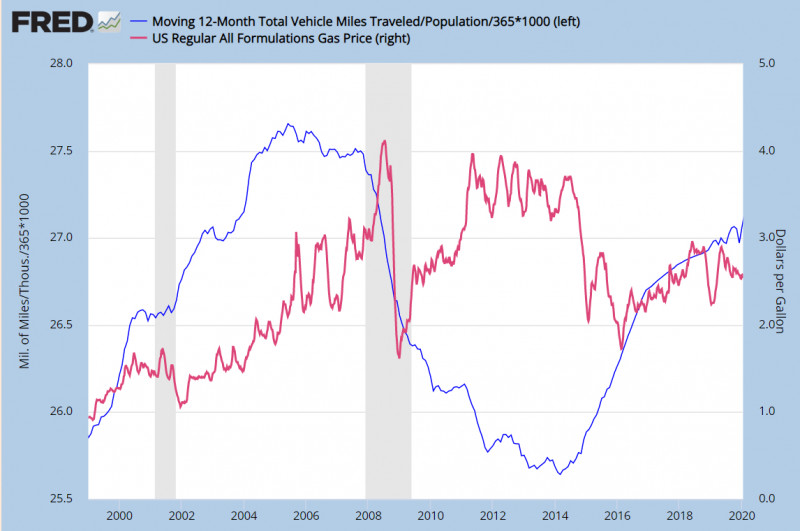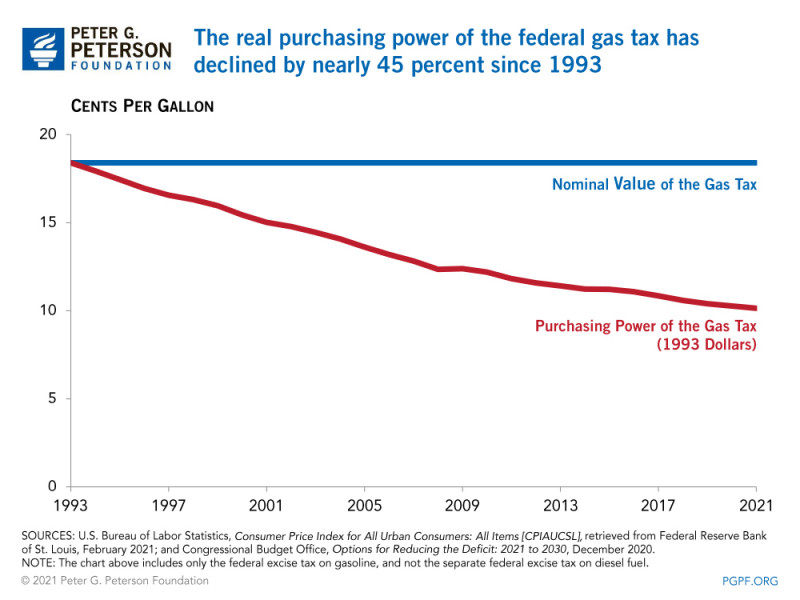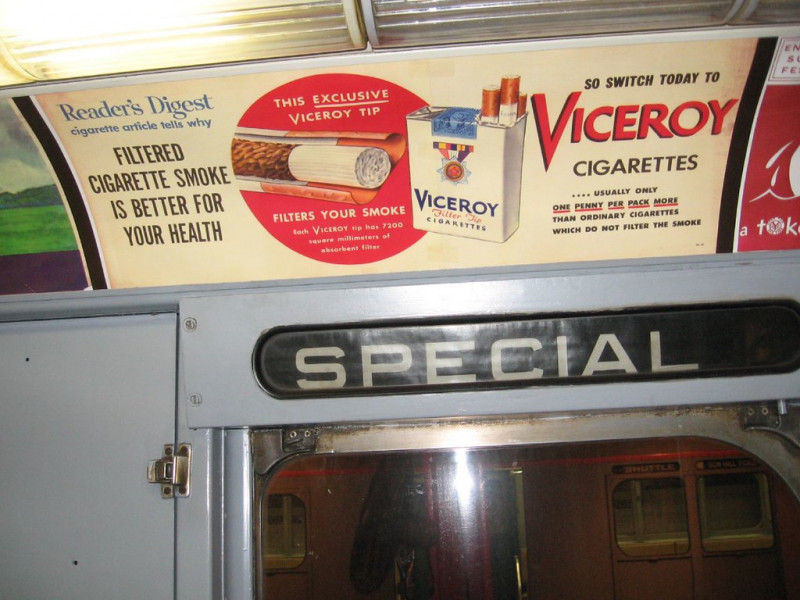Editor's note: A version of this article originally appeared on Greater Greater Washington and is republished with permission.
In 1964, 70 million Americans smoked, a full 42. percent of the adult US population. Nearly 60 years later, that rate has dropped to only 12.5 percent, a decrease credited with saving over eight million lives. This success has been so profound, the Center for Disease Control labeled it one of the ten greatest public health achievements of the 20th century, on par with breakthroughs like vaccinations and fluoridation of drinking water.
The transformation of American society from one where smoking was a celebrated totem of American culture to one in which it increasingly exists as an ostracized habit of the marginal few has been so complete, younger generations may assume it was a relatively easy, natural evolution. But that impression does a disservice to the deliberate vision, coordinated efforts, and persistent policy trial and error over decades that realized it. And those efforts reveal a partial roadmap for breaking our country’s similarly dangerous addiction to cars.

The first step is admitting you have a problem
At its most basic level, the first step in curbing smoking was deciding it was something worth curbing in the first place. “Smoking is deadly” is pretty universally understood today, but that wasn’t always the case. A 1966 poll “found only 40 percent of Americans recognizing smoking as a major cause of cancer.” Overcoming that public education problem – and the industry propaganda that fueled it – was the first major challenge.
While evidence of the dangers of smoking was accumulating as early as the 1930s and 1940s, the landmark moment came in 1964 when US Surgeon General Luther Terry released a report titled “Smoking and Health.” Surveying all of the available evidence, the report declaratively confirmed the link between smoking and lung cancer (along with other diseases). This formal, forceful declaration started moving public opinion and rallied policymakers to treat smoking as a public health threat.

In terms of the dangers to the public, driving is similarly if not more deadly than smoking. Between the directly attributable deaths from crashes, the indirect death and disease from air and particulate pollution caused by cars, and of course the civilizational threat from their carbon emissions, there’s no serious debate about the harms car trips pose. The distinction, of course, is that while smoking serves no material social interest, driving, regretfully, still does for many people in the US (thanks to the country’s penchant for sprawl and underinvestment in public transit).
But just because it will be incredibly difficult to fully disentangle our lives from car dependence does not mean we should be any less clear about the value of that goal. Just as the 1964 Surgeon General report unapologetically lined up the government’s interest against the practice of smoking, so do we deserve a similarly clear charge today around driving.
To be clear, that charge doesn’t mean having to adopt a maximalist task of eliminating cars entirely. A goal of just acknowledging driving as a necessary evil that policymakers should be working to reduce rather than expand would still be a radical shift in mindset and action.
But how?
While naming the goal is necessary and overdue, it’s hardly sufficient. The ‘how’ matters even more. Thankfully, the wealth of research and other information gathered from decades of anti-smoking initiatives can at least provide some clues to present-day policymakers interested in reducing car trips.
A 2017 meta-review of studies about tobacco control policies produced the following “scorecard.” Each intervention was graded on its impact on relative smoking rates on a short-term (five year) and long-term (40 year) basis, with both a “best” estimate and a range reflecting the scope of study results.

The results are quite instructive, with roughly three tiers of groupings. At top are the most structural interventions: tax increases on the price of tobacco and comprehensive smoke-free air laws which made it more difficult and inconvenient for smokers to light up in social spaces. Next are a suite of mass media, marketing and education campaigns, plus a comprehensive approach to individual user interventions. At bottom are those individualistic interventions in isolation, a phenomenon widely observed in other health areas as well.
The meta implication is clear: go big!
As other researchers analyzing the same data summarized, “the interventions that have the greatest impact on reducing tobacco use are those that alter the social contexts and incentives for using tobacco…the most potent demand-reducing influences on tobacco use have been interventions that impact virtually all smokers repeatedly.”
So how can policymakers apply these same types of interventions to reduce car trips locally? Let’s take a closer look at the parallels of those top two strategies, cost and convenience, to see.
Cost
Cost-based interventions follow well-documented economic logic: if you want people to consume less of something, raise its price. Increasing taxes on a product to accomplish this is described as a “pigovian tax” and cigarette taxes are the textbook example. The scale is impressive: over the last ~50 years, combined federal and state (average) taxes have gone from $0.18 to $2.92 per pack, playing a major role in more than doubling the consumer price, which has in turn seen clear impacts on the number of packs sold.

There’s no technical reason gasoline couldn’t be treated similarly. Indeed, the relationship between VMT and gas prices already somewhat conforms to this phenomenon. When the market price is high, American drivers are more judicious and generally cut back on the number/length of their trips. Rather than just wait for exogenous shocks in price, lawmakers could set out to encourage it.

The most direct way to do so would be through the federal gas tax. Currently, the tax is set at a measly 18.4 cents per gallon, where it’s been since 1993. And because it’s not pegged to inflation, that means gas has been getting relatively cheaper every year, subsidizing excessive car trips when we should be trying to disincentivize them.

Peer nations have a far different approach. The average gas tax in the European Union is $2.47 per gallon with a high of $3.69 (Netherlands) and a low of $1.49 (Hungary). To state that even more clearly: the lowest gas tax in an EU country is still eight times higher than ours.

Of course, as the collective political reaction to the temporary increase in gas prices earlier this year showed, Congress raising the federal tax on their own anytime soon is unlikely. But local leaders can and should explore adding a gas surtax of their own.
But gas taxes aren’t the only price intervention available. Road pricing (sometimes called congestion or decongestion pricing) is a tactic of charging drivers a fee to use specific streets at specific times. It’s incredibly effective and rapidly being implemented in more and more major cities around the world. Road pricing is also a more precise tool for policymakers. While a gas tax’s universality is often a strength, lawmakers may find more political support for policies that more surgically disincentivize specific trips.
This could be a game-changer for cities in particular, many of which have to suffer the costs and damage of hundreds of thousands of car trips from out-of-state commuters and tourists every single day. Congestion pricing offers a way to ensure that cost-burden is shared more evenly with those non-residents. The precision of the tool also allows it to be structured to directly address equity concerns by allowing for carve outs of specific users or dynamic fees tied to income.
The third bucket of city-controlled price interventions are fees for vehicle registration, parking permits, street parking, etc. Washington, DC actually just implemented a more significant weight-based surcharge for registration. The graduated fee recognizes both that heavier cars exact a more expensive toll on roads and that drivers of bigger vehicles are more likely to injure and kill people.
While an excellent first step and framework, unfortunately, the new annual fees are still probably not hefty enough to significantly impact vehicle purchase behavior. Even DC’s max fee of $500 per year for vehicles over 6,000 pounds is something of a rounding error for the general cost of those vehicles. For a more ambitious vision, look to France, which is taxing new vehicles at a rate of ~$10 for every pound over 4,000, meaning that same 6,000 pound car would be subject to a ~$20,000 surcharge.
Finally, the principle of charging more for parking to disincentivize car ownership and trips comes with a whole host of powerful research that is deserving of a longer analysis. Topline, some of the key advantages of this tool include the ability to finely target it to reduce the most discretionary trips – those to areas already well served by alternate transportation methods like downtown zones or entertainment districts. It also comes with the side benefit of reducing circling-for-parking behavior which adds a sizable amount of extra miles to otherwise complete trips.
In all of these price interventions, the first goal, of course, is a deterrent effect. The policy is ultimately working when users are not paying the fees because they’ve chosen a now-more-attractive non-single-occupancy-vehicle mode. But for the trips that remain, the resultant revenue will also be crucial to funding the rapid expansion of alternative modes of transportation and supporting any communities inequitably burdened.
Convenience
Second to cost, policies impacting convenience were the next most effective intervention in anti-smoking efforts, specifically clean air laws that prevented smoking in nearly all public places. Like taxes, the relative ubiquity of the intervention really maximized its impact. Within the course of about one decade, smoke-free laws went from basically nowhere to a majority of the country.

Unsurprisingly, when it’s easy to smoke somewhere, people are more likely to do it. But when they need to physically divert their path in some way, the added hassle plays a role in discouraging use. The appeal of this approach is even more obvious; the penalty to the individual smoker is more indirect (we’re not physically stopping you from smoking, we’re just putting the burden of finding a location on you), while the benefit to everyone else in the now-smoke-free space is overwhelmingly clear.
The applicability to driving is evident; car-free streets are often some of the most popular destinations in any city. Closing a street to cars trades a small inconvenience to some drivers in order to unlock a massive benefit for everyone else. And if those drivers use that inconvenience to reconsider whether they want to keep using a car for that particular trip in the first place, then both goals are met.

Car-free streets are obviously particularly ideal, but car-lite can be similarly effective. Redesigning streets to dedicate less space to cars and more to alternate modes like wider sidewalks, bus and bike lanes offers both carrots and sticks in the same approach. Healthier modes get faster and safer, while driving gets slower. Thanks to the well-documented principle of induced demand, we know drivers will collectively adjust their total volume of trips to match the capacity of the street. When thinking about it through their windshield perspective, drivers may be nervous about changes intentionally designed to make their trips less convenient, but, like smoking restrictions, the public will quickly find that when spaces stop catering so heavily to one type of nuisance user, they become far more safe and pleasurable for all.
Driving cessation programs
While the sticks of higher costs and less convenience are particularly appropriate for fairly discretionary activities like smoking, applying them to driving raises the obvious concern about penalizing people who face little to no choice in the matter. When those people are disproportionately from traditionally underserved communities, that obviously raises equity questions as well, questions that are often at the forefront of resistance to car-trip reduction strategies.
But anti-smoking campaigns had to deal with a similar problem. As a highly addictive drug, many nicotine users experience a highly-inelastic demand for cigarettes. The driver who has to commute to work at a remote, exurban location is not too categorically different from the smoker who has to consume a pack a day to effectively function. For those users, changes in price or access are unlikely to change behavior on their own and are mostly just borne as an added cost.
What’s important to remember is that the initial goal for any individual user isn’t all or nothing. Few pack-a-day smokers are able to quit cold turkey, but slimming their consumption by a few cigarettes a day can be an attainable start. Similarly, that exurban commuter may not be able to replace her commute, but her trip to the local pharmacy might be a different story.
In fact, that kind of graduated reduction was a big part of the overall anti-smoking success story. Between 1983 and 2004 in particular, cigarette consumption per capita fell by half, a drop driven not just by quitters but also by “a decline in the number of cigarettes smoked per day among those who smoke.” And that trend continued in the following decade.

One of the major keys to that decline was the rise of smoking cessation aids like gum, patches, nasal sprays, and more, combined with behavioral supports and social attitudes encouraging quit attempts.
Again, the parallel is clear and obvious. Particularly for drivers-by-force, we need to actively provide alternative modes as a corresponding pull factor to the cost and convenience push ones. Expanded, faster transit, safer, more comfortable sidewalks and bike lanes, and social encouragement for active transportation can all provide a softer landing for drivers considering making the switch for certain trips.
In good news in the anti-smoking case, those initial steps to reduce trips actually proved to be a virtuous slippery slope in the long-run. A 2005 study revisiting participants from an earlier smoking cessation study found that “those who reduced [their cigarette consumption] by more than 50 percent were 1.7 times more likely to quit smoking by 2001 than those who did not reduce.
It’s easy to imagine how this could play out in transportation as well. Drivers who try a bikeshare for a low-stress trip may find themselves developing the enthusiasm and skills to eventually buy their own bike. Or experiencing the comfort of taking the bus for one type of trip might influence a later housing move to a more bus-accessible location.
Harm reduction
There’s one more element from America’s fight against smoking that has some direct parallels with car trip reduction, and that’s the strategy of trying to dampen the danger of use without really curbing usage at all.
For tobacco, that largely took the form of features like filters or “lite” cigarettes, or product replacements like chewing tobacco and more recently electronic cigarettes. Those results are clearly cautionary. Having done little to truly mitigate harm, these alternative products either deceived about their relative safety (filtered cigarettes are just as dangerous) or just displaced it with other harms (i.e. swapping lung cancer for mouth cancer). In essence, rather than lead to any safer outcomes, they just allowed the tobacco industry to capture the demand for safety, while delaying meaningful behavior change for consumers genuinely interested in mitigating risk.

On the car side, the same thing has already happened. Dominated by manufacturers, the US safety conversation has been myopically focused on safety ratings exclusively for people inside cars, spurring an arms race in which manufacturers design larger and larger vehicles promising protection for drivers and passengers at the expense of everyone else. And the climate conversation has been almost totally monopolized by a focus on electric vehicles alone, ignoring the far greater benefits of mode-shift and the intersectional risks of traffic violence.
As the Institute of Medicine’s 2007 “A Blueprint for the Nation” report summarized well regarding tobacco, we can’t take our eye off the ball: “…the central aim for tobacco policy must continue to be reducing the number of tobacco users through a two-pronged strategy of reducing initiation and facilitating cessation. Harm reduction (reducing the risks of consumption) is, at best, an ancillary component of a comprehensive strategy for protecting the public health.”
With both tobacco and car use, the problem is economic at its core: the safest solution, usage reduction, is antithetical to the business aims of the industry, and thus a non-starter.
That obstacle has translated into political conventional wisdom as well, with political leaders trumpeting automatic and electric vehicles as the solutions to lethality and emissions. But given the continued unchecked growth in vehicle miles traveled (VMT), even majorly successful lethality-reduction-measures will still be overwhelmed by the raw number of crashes. And even complete elimination of carbon emissions (a costly transition that will take longer than we have to hit climate goals) will leave crashes and dangerous particulate pollution deaths intact.
Simply put, there is no world in which we can maximize safety and continue our current path of car usage. The safest car trip is the one that never takes place in the first place.
Nick Sementelli is a 17-year DC resident who lives in Ward 5. In his day job, he works as a digital strategist for progressive political campaigns and advocacy groups. Outside of the office, you can find him on the soccer field or at Nats Park. He currently serves on GGWash's Board of Directors.
This article is part of a larger series about reducing the trips people take by car in the D.C. area. Read parts one and two below:






